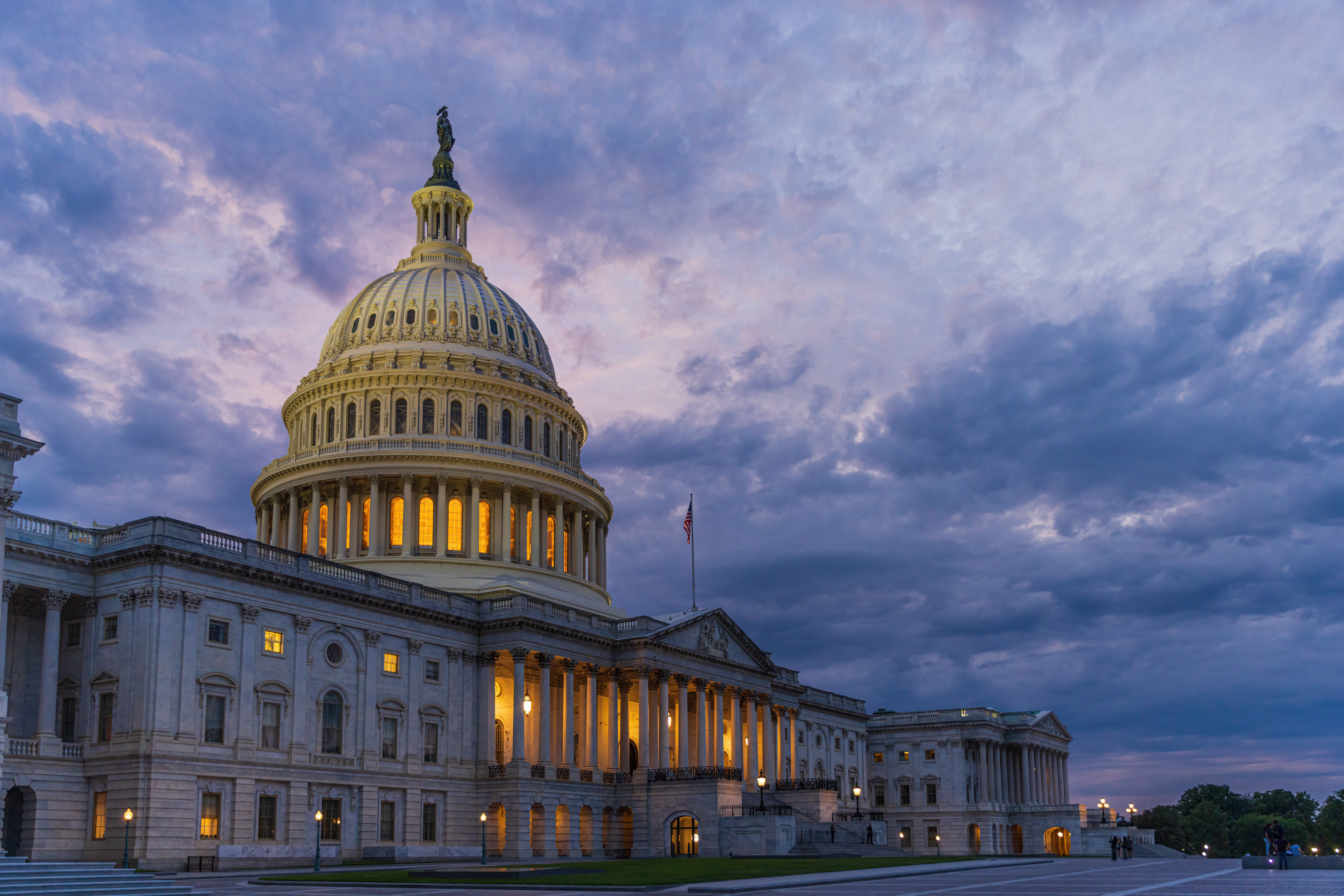 Return to Articles
Return to Articles
10.01.2025
Government Shutdown Shuts Out Kids

Authors: Esther Grambs and Riley Snyder, Children’s Funding Project, October 1, 2025
Link to Source: https://childrensfundingproject.org/update/government-shutdown-shuts-out-kids/
Republished with permission from Children’s Funding Project.
On September 30, Congress failed to pass legislation to fund the federal government’s operations for the upcoming fiscal year and keep the federal government from shutting down.
That means federal funding stops for certain child care, early learning, after-school, and other educational programs; specific food and medical referral programs for infants and children; programs for children experiencing homelessness and abuse, and others.
A federal government shutdown affects many people and sectors, but children, youth, and families who rely on federally funded programs are especially hard hit the longer a shutdown lasts.
Here’s what’s at stake and why uninterrupted federal investment in children and youth matters.
What Is a Federal Government Shutdown—and Why Does It Matter?
In a shutdown, federal agencies discontinue all nonessential discretionary functions until the president signs legislation that will fund those operations.
Essential services such as air traffic control, law enforcement, power grid maintenance, and any mandatory spending programs continue to function.
Mandatory spending refers to federal spending controlled by laws that are not part of the annual federal budget process. Therefore, when the annual budget process fails and triggers a shutdown, these programs are still maintained. Some examples of mandatory spending programs include Medicaid, the Supplemental Nutrition Assistance Program (SNAP), Temporary Assistance for Needy Families (TANF), and Social Security.
Programs affected by a government shutdown are known as discretionary spending programs, meaning they are supported by money appropriated during the annual budget process. Generally, about half of this funding supports national defense, and the other half funds programs ranging from education, housing, child welfare, justice, research, transportation, and more.
Unless the programs are considered necessary for national security, all funding and all administrative activities for these programs freeze during a shutdown.
How Does a Shutdown Affect Funding for Children and Youth?
Many of the programs that children, youth, and families rely on to meet their basic needs, succeed in school, enter the workforce, and meet developmental benchmarks receive a significant amount of discretionary funding—the very dollars impacted by a shutdown.
Moreover, these federal programs typically target children from low-income families and other vulnerable populations who have limited resources to make up for funding shortfalls.
As a result, service providers who usually receive federal dollars to support these children and families may be forced to cease or reduce operations during a federal government shutdown, causing children to fall behind on their development, and go without basic necessities like health care, food, housing, education, and child care.
Major scheduled functions and payments for mandatory programs like SNAP, Medicaid, and TANF, will be mostly uninterrupted by the federal government shutdown.
However, like most things involving federal money, the effects of a shutdown on mandatory spending are not as straightforward as they may initially seem. This is primarily because most programs have mandatory and discretionary components.
For example, payments for food and cash benefits for many child-serving nutrition assistance programs, including SNAP, the National School Lunch and Breakfast Programs, the Child and Adult Care Food Program, and the Summer Food Service Program, is mandatory spending, but the funding for federal agencies to administer these programs is discretionary spending.
Without funding for the agency staff to do their jobs, benefits cannot be disbursed, new applications cannot be processed, complaints cannot be resolved, and state and local administrators cannot get the technical assistance they need to step in to cover the federal shortfall.
Some mandatory programs have a much more significant proportion of discretionary funding, such as the Child Care and Development Fund, which is the largest federal child care subsidy program serving more than 1.4 million children ages 0 to 12 annually (as of fiscal year 2022).
While about 40% of the Child Care and Development Fund comes from mandatory spending, the other 60% comes from discretionary spending. This means that child care providers who primarily serve low-income families could lose a majority of their revenue. This may force them to reduce services or close their doors entirely.
Additionally, parents unable to work because they need to stay home with their children may struggle to meet work, education, or volunteer requirements for other public benefits.
Meanwhile, the Pell Grant Program, which is the largest federal undergraduate grant program, relies more heavily on discretionary funding. Up to 85% of a Pell Grant’s value comes from discretionary funding.
During a shutdown, Pell Grant students, most of whom come from families with incomes below the federal poverty level, receive only part of their full award. If they are unable to pay for their programs, they could, in turn, miss crucial enrollment windows for higher education and vocational training programs. Nationwide more than one-third of undergraduate students receive a Pell Grant.
Equally significant are all the programs whose funding is entirely discretionary. The term “discretionary” may imply that these programs are less important or less consequential than their mandatory counterparts. But that could not be further from the truth.
Below we list some of the discretionary programs that support children and youth that are entirely frozen during a shutdown:
- The Special Supplemental Nutrition Program for Women, Infants, and Children (commonly known as WIC)
- provides food and medical referrals to low-income women and children under age 5 who are determined to be at nutritional risk.
In a shutdown, these families lose their benefits and go hungry.
- The Education for Homeless Children and Youth Program provides services like supplemental instruction, transportation, health care referrals, and more for K-12 students experiencing homelessness. In a shutdown, this specialized and targeted care for some of the most marginalized children is cut off.
- Head Start is a child care program for low-income children up to age 5. During a shutdown, all Head Start funding stops, leaving programs unable to operate. This is particularly devastating for providers who also enroll children subsidized by the Child Care and Development Fund as they lose multiple revenue streams simultaneously.
- Title I Grants to Local Education Agencies provide the largest source of federal funding for K-12 education. These funds primarily supplement the K-12 education of students from low-income families. But during a shutdown, this critical school funding ceases, putting the largest financial strain on the poorest schools, which are least able to cover the budgetary shortfall caused by a shutdown.
- The 21st Century Community Learning Center Program is the only dedicated federal funding stream for out-of-school time programs. When this funding stream freezes, out-of-school time programs may be forced to stop their activities, leaving children without important enrichment outlets and leaving working families without access to child care for school-age children.
- The Workforce Innovation and Opportunity Act Youth Activities program provides educational and occupational skills, training, and support to vulnerable youth between the ages of 14 and 24. If payment to these activities shuts down, many of these youth will lose access to essential programs and progress toward their self-sufficiency goals. They may even be unable to reconnect with their programs when funding resumes.
How Is This Government Shutdown Different?
It may seem that this shutdown will be no different from those in the past. To some extent, this is true—there have been 10 government shutdowns since the procedure was established in 1976.
This includes the most recent, and longest government shutdown in U.S. history, that occurred in 2019, which lasted for 34 days. Additionally, every year since 1997, the federal government has relied heavily on stopgap funding measures (known as continuing resolutions) to maintain government functions for at least part of every fiscal year.
Not only has this made shutdowns a persistent and looming presence in the federal budget process, but it also has undermined the stable funding necessary to plan, implement, and sustain programs that support children and families.
Ultimately, this political divisiveness made a government shutdown inevitable, and it will continue to cause funding gridlock while damaging the programs and services that kids and families depend on.
Beyond the structural, procedural, and partisan issues that have placed roadblocks in the annual budget process, it is important to point out some key differences between previous budget fights and the current one.
Most notable are the explicit directives from the current administration’s Office of Management and Budget that the appropriations process “has to be less bipartisan.” This marks an overt departure from previous budget processes where legislators from both political parties ultimately came together to fund essential government services.
Moving away from a bipartisan process will only exacerbate congressional polarization and is unlikely to lead to better outcomes for kids.
Additionally, even if a partisan budget was able to pass through Congress, its content would likely reflect the sweeping policy shifts we’ve seen from this administration, which includes massive funding cuts, workforce reductions, and the removal of critical tools state and local governments rely on.
Ultimately, this political divisiveness made a government shutdown inevitable, and it will continue to cause funding gridlock while damaging the programs and services that kids and families depend on.
Call to Action
We need our elected leaders on all levels, but especially in Congress, to work together to fund the programs and services children need and to prioritize consistent, sustainable funding for children and youth.
Kids and families deserve certainty that federally funded programs will be there to support their health, education, and overall well-being—not a system that leaves them hanging in the balance year after year.
In the meantime, state and local leaders and advocates can continue the critical work to ensure children and youth in their communities have the resources they need:
- Map your risk. Use our Federal Funding Streams for Children and Youth Services database and our state and local fiscal maps to understand the historical flow of funding into your state and identify programs at risk.
- Mobilize your community. Build coalitions across sectors—education, health care, child care providers, youth-serving organizations, and family advocates—to document the impact of funding instability, develop contingency plans for federal disruptions, and collectively advocate for state and local solutions.
- Build toward sustainable alternatives. Learn from communities that have established local voter-approved children’s funds and states that have invested in state dedicated funds to fill new funding gaps and support children and youth.
Esther Grambs is the manager for federal fiscal data and Riley Snyder is a federal data and policy intern at Children’s Funding Project.
Children’s Funding Project is a nonprofit social impact organization that helps communities, states, and Native nations expand equitable opportunities for children and youth through strategic public financing. To learn more, visit childrensfundingproject.org.






